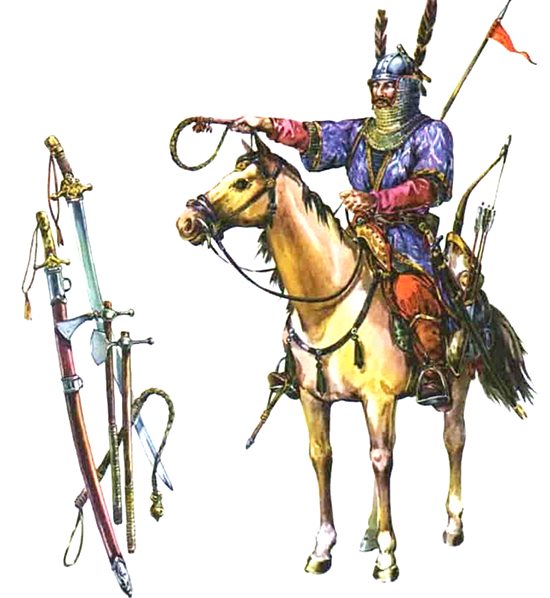
Battle of Vasiliki Livada |
year: 1050 |
| Defeat of the Byzantines by the Pechenegs | ★ ★ ★ ★ ★ |
|
enemy: Pechenegs
|
location: In the unknown location Vasiliki Livadha (Royal Meadow) north of Adrianople
|
accuracy:
●●●●●
|
|
battle type: Pitched Battle |
war: Pecheneg Wars |
modern country:
Turkey |
| ▼ The Byzantines(emperor: Constantine IX Monomachos) | ▼ The Enemies | |
| Commander: | Praepositus Constantine | Soultzous (?) |
| Forces: | ||
| Losses: |
| Background story: |
| In 1049, a large population of Pechenegs (maybe 800,000) settled, with the tolerance of the Byzantines (initially), in the area around Serdika, present-day Sofia, Bulgaria. From there, ignoring the intentions of Byzantium to Christianize them and integrate them into the empire, they launched attacks against Macedonia and Thrace. The Byzantines tried to stop them but repeatedly failed. In 1050, a large army was organized with the participation of the tagmata of the East, which, however, suffered a painful defeat at the Battle of Diakene in northeastern Bulgaria. Emperor Constantine IX Monomachos was angry with these failures, but was determined not to leave the northern Balkan provinces at the mercy of the Pechenegs. |
The Battle: |
 A Pecheneg warrior and his arms Among the officers of this army were the magistros Constantine Arianitis (Duke of Adrianople), the patrician Samuel Vourtzes (head of the infantry) and the patrician Michael Doceianos, an experienced but rather incompetent soldier who had served under General Maniakes in Sicily and had been for a short period Catepan (governor) of Italy. The Pechenegs, no longer afraid of the Byzantines at all, extended their raids further south, and in June 1050 reached the outskirts of Adrianople. Their leader (or one of their leaders) was Soultzous who had been one of the protagonists of the revolt of the15,000 Pechenegs that the emperor had tried to send to fight in Anatolia two years ago. The Byzantine force left Adrianople to intercept the Pechenegs and stationed a little further north, at Vasiliki Livada, where, at Dokeianos’ suggestion, they built a fortified camp protected by a moat. The Pechenegs were too many, “an innumerable crowd”, and the Byzantines were ordered by Arianitis to stay inside the camp. However, Samuel Vourtzes disobeyed the order and attempted to march with his infantry against the Pechenegs. He was soon surrounded by the enemy and called for help. Then the rest of the army had to come out to save Vourtzes’s unit. The Byzantines had no chance to win the battle but managed to retreat without heavy losses and fortified themselves again in their camp. Still, they had some significant losses: Konstantinos Arianitis was fatally wounded by a spear (he died two days later), while Michael Dokeianos was injured and taken prisoner. The Pechenegs then besieged the Byzantine camp, trying to fill the ditch with branches and stones. They would have captured the fort but then something unexpected happened: a catapult arrow hit Soultzous and pierced him and his horse. This shocked the Pechenegs. At the same time, a military unit came out of Adrianople to help the besieged, led by Nikitas Glavas. The Pechenegs seeing this force approaching and fearing the intervention of more Byzantine reinforcements from Bulgaria abandoned the siege of the camp and withdrew. |
Noteworthy: |
| Dokeianos was captured and taken to the leader of the Pechenegs. The Pechenegs were generally brutal to their enemies, but they would not harm the prominent prisoners in anticipation of rich ransom. Michael Dokeianos, however, managed to grab a sword from a guard and cut off the hand of the Pecheneg ruler. The angered Pechenegs fell on him, disemboweled him, cut off his arms and legs and put them in his open abdomen. |
Aftermath: |
| The Pechenegs prevailed in northern Thrace and Bulgaria. In the next couple of years the Byzantines did not send another army. Instead, small units were dispatched to man fortresses in Thrace. From there, they were launching surprise attacks against the raiding detachments of the Pechenegs. |
|
|
